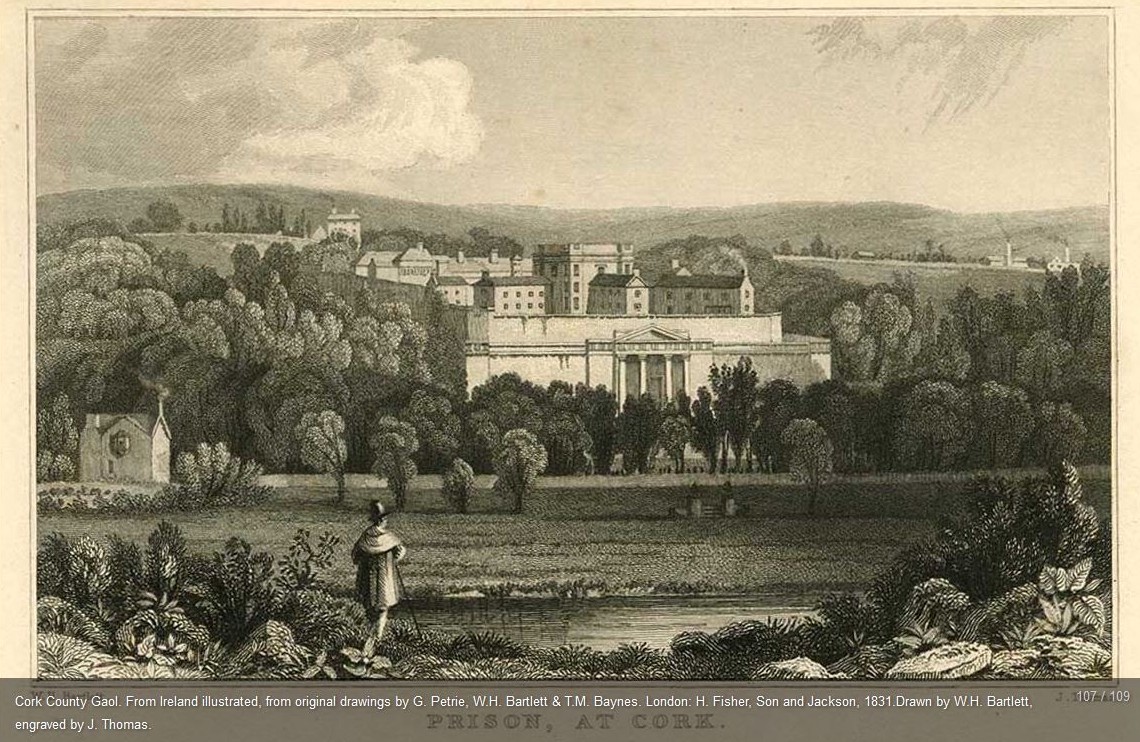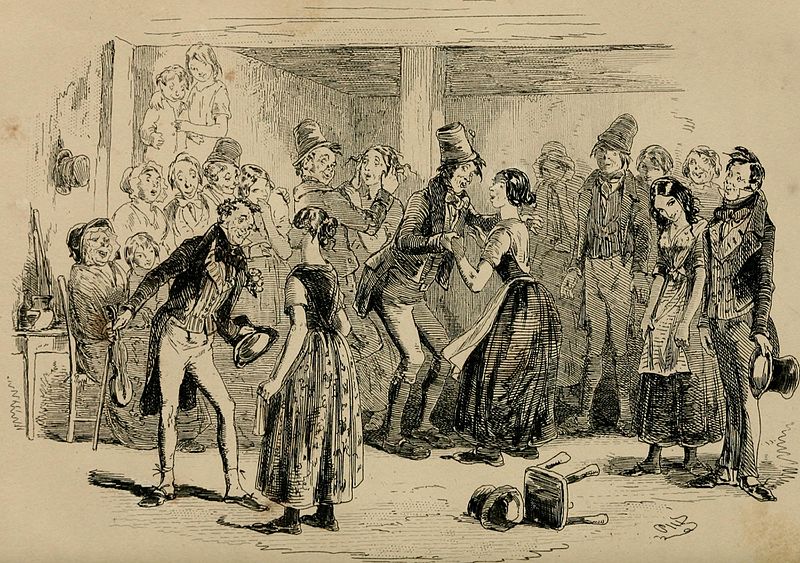In 1832 an outbreak of cholera threatened the women in the prison of Cork, Ireland. No-one knew how to prevent the development or spread of cholera because the discovery of germs — the cause of cholera — did not happen until 1864. Even worse, no doctors knew how to treat cholera patients. [1]

The Prison at Cork (1831).
Courtesy of Cork Past & Present.
The prison authorities came up with a special treatment:
Since the introduction of cholera into the county gaol of Cork, a novel method has been adopted to prevent its spreading. A musician is engaged to play for the female prisoners (to whom the epidemic is entirely confined) for a few hours every evening; they are all brought together into one of the largest apartments in the prison, and such an interest is excited amongst them by the music and the dance, that they appear to forget altogether the cholera and its terrors. This mode of prevention was suggested by the idea, that as fear is a predisposing cause, nothing could tend more to diminish its influence. The same method has been tried at the convict depot, and with success. (The Morning Chronicle, 3 May 1832).

An Irish dance from Tales and sketches, illustrating the character, usages, traditions, sports and pastimes of the Irish peasantry. William Carleton, Dublin (1845).
Of course, the convict women would have danced together with no men present, apart from the fiddler and perhaps some prison guards.
Some of the inmates from Cork prison during this time were subsequently transported to the colony: 141 female prisoners and 11 of their children were disembarked when the convict ship Surry arrived at Port Jackson in 1833. [2]

The convict ship Surry sailed from Cork on 15th November 1832 and arrived at Port Jackson on 9th March 1833. This illustration from Journal of a Voyage from London to New South Wales and VD’s Land [Van Diemens Land]. State Library of New South Wales.
Dr Colin Arrott Browning, a surgeon who served on convict transports to Australia, believed cholera resulted from the anguish, dislocation, and protracted mental and physical deprivation caused by prolonged or solitary imprisonment. [3] Some enlightened surgeons on convict ships actively encouraged the prisoners to dance with the understanding that it was beneficial for their health.[4]
References
[1] Read more about the cholera outbreak in Britain here
[2] The convict ship Surry
[3] Foxhall, K. (2011). From Convicts to Colonists: the Health of Prisoners and the Voyage to Australia, 1823 – 1853. Journal of Imperial and Commonwealth History, 39(1). doi:10.1080/03086534.2011.543793
[4] Blasdale Clarke, H. E. (2018). Social dance and early Australian settlement: An historical examination of the role of social dance for convicts and the ‘lower orders’ in the period between 1788 and 1840. (Professional Doctorate), Retrieved from https://eprints.qut.edu.au/121495/

